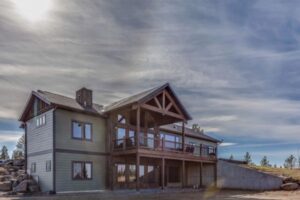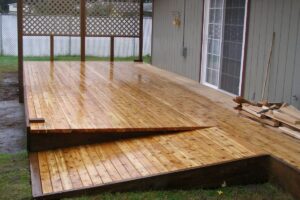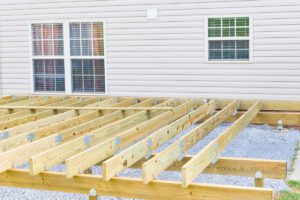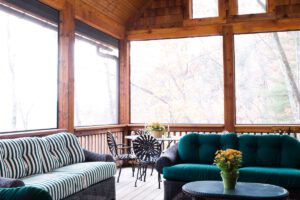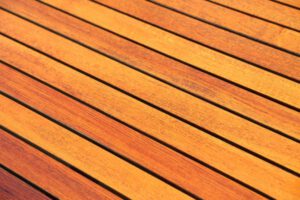
Discover tips for selecting the best decking material. Compare wood, composite, and more to find the perfect fit for your outdoor space.
A well-constructed deck can be the jewel of your outdoor space, providing an inviting retreat for relaxation, gatherings, and warm summer evenings. However, one of the most critical decisions in deck construction is often overlooked until it’s time to build—the choice of material. The material you select can significantly impact the deck’s aesthetics, durability, maintenance requirements, and, ultimately, your overall satisfaction with the outdoor space.
Understanding Your Decking Needs and Priorities
Before diving into the world of decking materials, it’s crucial to assess your specific needs and priorities for your outdoor space. Start by considering how you plan to use your deck—whether it’s for entertaining, relaxation, or a mix of both. Think about the climate in your region and the amount of maintenance you’re willing to commit to.
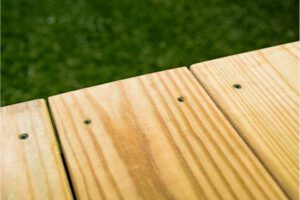
Understanding your preferences for aesthetics, durability, and budget constraints will serve as the compass guiding your choice of material. By clarifying your priorities, you’ll be better equipped to navigate the myriad of options available, ultimately leading you to select the decking material that best aligns with your vision for the perfect outdoor oasis.
Factors to Consider When Choosing Decking Materials
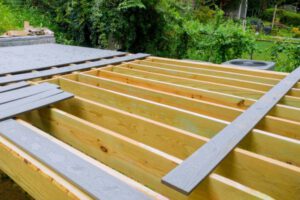
To make an informed choice when selecting the ideal decking material, it’s essential to weigh various factors. Here’s a concise list of key considerations:
● Aesthetics: Determine the look and style you desire for your deck, whether it’s the classic warmth of natural wood or the modern appeal of composites.
● Durability: Evaluate the material’s resistance to wear, weather, insects, and decay, ensuring it matches your expectations for longevity.
● Maintenance: Consider your willingness and capacity for regular upkeep, as some materials require more care than others.
● Budget: Define your budget constraints, keeping in mind that initial costs, long-term expenses, and potential maintenance all contribute to the overall expense.
● Climate: Account for your local climate, as extreme heat, cold, moisture, or sun exposure can affect material performance.
● Environmental Impact: Reflect on sustainability and eco-friendliness, as some materials may align better with your green values.
● Texture and Grip: Think about the surface texture and slip resistance, especially if safety is a concern.
● Installation Method: Understand the installation process, as some materials may require specialized skills or equipment.
● Local Building Codes: Check local regulations and building codes to ensure your chosen material complies with requirements.
Exploring Decking Material Options: Pros and Cons
Now, let’s delve into the specific deck material options available, highlighting the advantages and drawbacks of each to aid your decision-making process.
Here’s a list of pros and cons for common decking materials:
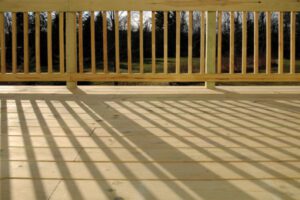
Wood
● Pros: Wood offers a timeless, natural beauty that many homeowners find appealing. It’s versatile, allowing for various styles and finishes. Additionally, wood can be relatively affordable compared to some alternative materials.
● Cons: Wood demands regular maintenance, including staining or sealing, to protect against the elements. It’s also susceptible to rot, pests, and decay if not adequately cared for.
Pressure-treated Wood
● Pros: Pressure-treated wood is often chosen for its affordability, durability (when properly treated), and widespread availability.
● Cons: While treated, it still requires regular maintenance. Additionally, concerns about the chemicals used in the treatment process have been raised.
Cedar and Redwood
● Pros: Cedar and redwood are known for their natural resistance to decay and insects, making them attractive choices. They offer an appealing appearance that many homeowners admire.
● Cons: These woods come at a higher cost than some other options, and they still require maintenance to maintain their longevity and appearance.
Composite Decking
● Pros: Composite decking boasts low maintenance requirements, exceptional durability, and a wide range of styles and colors. It’s also resistant to decay, pests, and rot.
● Cons: The initial cost of composite decking can be higher than wood, and some composite boards may retain heat, making them uncomfortable on hot days.
PVC Decking
● Pros: PVC decking requires minimal maintenance and offers impressive durability. It’s highly resistant to moisture and insects, making it suitable for various climates.
● Cons: The upfront cost is often higher, and there may be limited color options compared to other materials.
Aluminum Decking
● Pros: Aluminum decking is exceptionally durable, requiring minimal maintenance. It’s also fire-resistant, making it a safety-conscious choice.
● Cons: The initial cost tends to be higher, and the aesthetic variety may be more limited compared to other materials.
Stone or Tile
● Pros: Stone or tile decking options are known for their durability and unique appearance. They require minimal deck maintenance and can create stunning outdoor spaces.
● Cons: Stone or tile can be heavy, which may require additional structural support. Installation complexity can be a concern, and these materials are often more expensive.
Budget-Friendly Decking Solutions Without Compromising Quality
Several budget-friendly decking options can provide a cost-effective yet quality outdoor space when working within budget constraints. Pressure-treated wood remains popular, offering durability and a natural appearance while keeping costs in check. Though pricier than pressure-treated wood, Cedar strikes a balance between cost and aesthetics, thanks to its natural resistance to decay and insects.
Composite decking, while initially more expensive than wood, can be a wise long-term investment due to its minimal maintenance requirements and extended lifespan. Additionally, exploring local suppliers and considering alternative materials like bamboo can uncover affordable and eco-friendly options.
Maintenance Demands: Picking a Decking Material That Fits Your Lifestyle
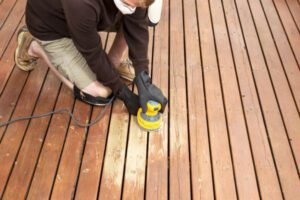
When it comes to maintenance, your choice of decking material should align with your lifestyle and how much time you’re willing to invest in upkeep. Wood decking, while classic, requires regular staining or sealing to maintain its appearance and protect against the elements. Pressure-treated wood falls in a similar category, necessitating maintenance over time.
If minimal upkeep is a priority, consider composite or PVC decking, both known for their low-maintenance attributes. These materials resist rot, pests, and fading, requiring little more than occasional cleaning. Ultimately, matching the maintenance demands of your chosen deck material to your lifestyle can significantly impact your deck’s long-term satisfaction and longevity.
Why Choose North Shore Deck Builders
At North Shore Deck Builders, we pride ourselves on being your trusted partner in creating the perfect outdoor space. Our experienced team understands the nuances of deck materials, helping you make informed decisions based on your preferences, budget, and lifestyle. We offer a wide range of options, from traditional wood to cutting-edge composite materials, ensuring your project aligns with your vision.
With a commitment to quality craftsmanship and customer satisfaction, we bring your dream deck to life efficiently and effectively. Whether you’re looking for budget-friendly solutions or low-maintenance alternatives, North Shore Deck Builders has the expertise and dedication to transform your outdoor space into a haven of beauty and relaxation. Choose us for a seamless decking experience that enhances your home and lifestyle.

